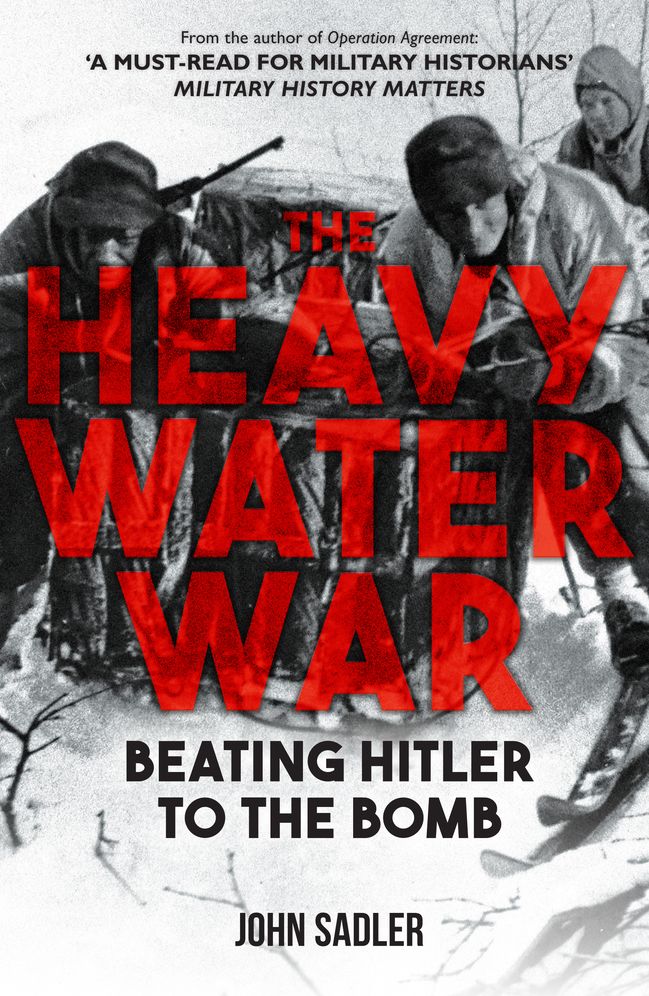
The Heavy Water War: Beating Hitler to the Bomb
by
John Sadler
Format: Hardcover
ISBN: 9781398117679
Publication Date: 04/16/2024
If Hitler had succeeded in developing a nuclear bomb, that could have been both the end of the Second World War and of civilization as we know it. A handful of commandos stopped him.
During the course of the Second World War, the Allies mounted a series of attempts to prevent Germany from manufacturing heavy water by utilizing hydroelectric plants in occupied Norway. These efforts comprised a mix of bomber and commando raids. The overall aim was stop Nazi Germany building a nuclear bomb.
In fact, Hitler was never as close as the Allies thought, but the idea that his regime could construct and deploy a device was the ultimate doomsday scenario, one that would have tilted the balance in favor of the Nazis. The mere threat might have been sufficient to force a negotiated peace with the perceived reality of a Nazi bomb hanging over the world like a nuclear-powered sword of Damocles.
Production, and therefore Allied aims, centered on the Vemork Power Station standing by the Rjukan Waterfall at Telemark. A series of daring raids, Operations Grouse, Freshman and Gunnerside, neutralized the plant’s capacity. In Operation Freshman, every single glider-borne paratrooper was either captured or killed.
In February 1943, a force of SOE-trained Norwegian commandos succeeded in sabotaging the plant’s production capacity. Further manufacturing effort was abandoned, and the Nazis attempted to transport the heavy water they had about the ferry SF 'Hydro'. The Norwegians managed to sink the vessel in the deep waters of Lake Tinn. The stakes in any special forces raids in history have never been higher.
During the course of the Second World War, the Allies mounted a series of attempts to prevent Germany from manufacturing heavy water by utilizing hydroelectric plants in occupied Norway. These efforts comprised a mix of bomber and commando raids. The overall aim was stop Nazi Germany building a nuclear bomb.
In fact, Hitler was never as close as the Allies thought, but the idea that his regime could construct and deploy a device was the ultimate doomsday scenario, one that would have tilted the balance in favor of the Nazis. The mere threat might have been sufficient to force a negotiated peace with the perceived reality of a Nazi bomb hanging over the world like a nuclear-powered sword of Damocles.
Production, and therefore Allied aims, centered on the Vemork Power Station standing by the Rjukan Waterfall at Telemark. A series of daring raids, Operations Grouse, Freshman and Gunnerside, neutralized the plant’s capacity. In Operation Freshman, every single glider-borne paratrooper was either captured or killed.
In February 1943, a force of SOE-trained Norwegian commandos succeeded in sabotaging the plant’s production capacity. Further manufacturing effort was abandoned, and the Nazis attempted to transport the heavy water they had about the ferry SF 'Hydro'. The Norwegians managed to sink the vessel in the deep waters of Lake Tinn. The stakes in any special forces raids in history have never been higher.
Choose options

The Heavy Water War: Beating Hitler to the Bomb
Sale price$40.00
















